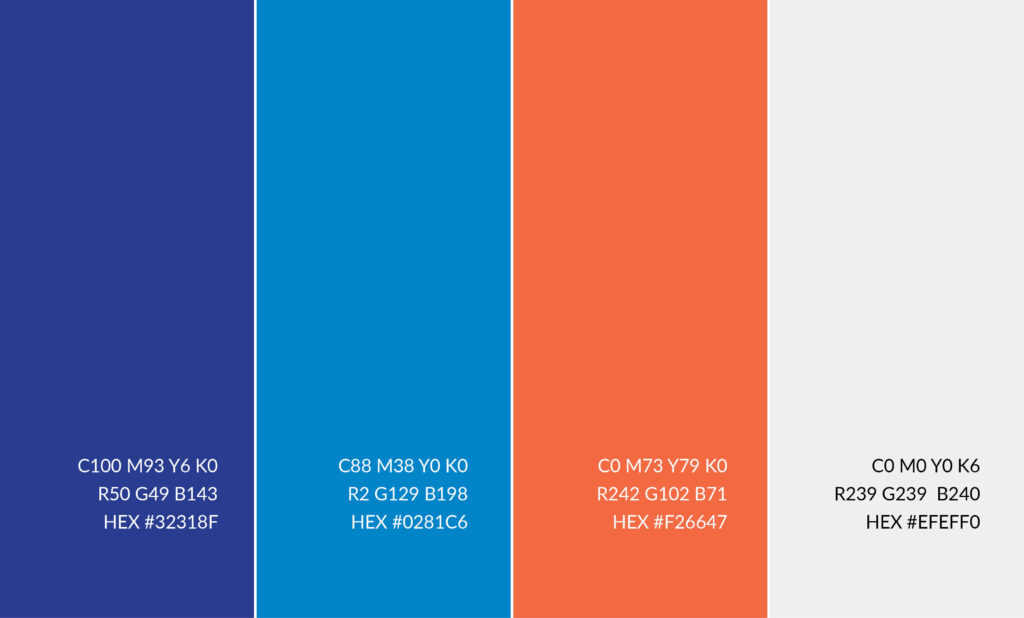
Take the first steps toward establishing your brand and building trust with your audience
Key Takeaways:
- A brand style guide is a company’s rulebook that ensures consistency in how it looks, feels and sounds
- Your brand voice is your brand’s personality and helps you stand out from the crowd
- Your brand is not just the logo but also your voice and tone, color, brand story and supporting elements like photos, icons and illustrations
Brand consistency is crucial for any business. It creates a personality that people can identify with. Just as you are more likely to trust and depend on a friend with a consistent personality, we are all inclined to trust brands whose look, feel and sound is consistent.
A brand style guide contains all the guidelines required to represent your organization in a consistent way. Whether it’s an internal memo, advertisement, business card or tweet, your work should be consistent with your brand guidelines.
However, maintaining consistency can be challenging, especially when many creators are involved – like marketing agencies, freelance designers and copywriters. A brand style guide acts as a rulebook for all of them to ensure that, no matter who works on it, your marketing is consistent.
So, how do you create a brand style guide? We’ll show you how in five practical steps.
1. Create Your Brand Story
Telling your brand story allows your audience to connect emotionally to your brand. It delivers your company values and what the brand stands for aligned with what is important to your customers and clients. It creates trust and gives meaning to the content that forms your brand image.
To create a holistic brand story:
- Choose a brand name that reflects who you are: For example, Caleb Bradham created a beverage named Brad’s Drink. When it didn’t have much success, he bought the name Pep Kola from a competitor and renamed his drink Pepsi according to the Pepsi website. The rest is history.
- Outline your company values: These are the beliefs and guiding principles you stand by. Defining them guides the actions and behavior of your employees, customers and stakeholders.
- Define your Purpose: The purpose is your company’s “why” beyond making money. It’s your reason for being.
- Make a promise: Describe the value you’ll deliver to your customers. Nike promises to “bring inspiration and innovation to every athlete in the world.” What do you promise to bring?
2. Build the Visual Foundation
This includes your brand identity, colors and typography.
- Brand identity: A brand identity is a symbol or graphic element that represents your business. A brand style guide provides your primary logo in different sizes and file formats for print and digital. It also shows how the logo is used in different situations and, importantly, how not to use it.
- Define your brand colors: Create a brand color palette with primary and secondary colors. Specify the HEX, RGB, Pantone and CMYK color codes. This will guide anyone to the exact colors for printed materials or digital.
- Set guidelines for your typography: Ensure consistent brand typography across your collateral. Create typefaces — families of related fonts — for your brand. These must include the specific fonts including the weight, spacing, width, desired size and styles for developers to create uniform web pages and print collateral. Additionally, set typography principles as guidance on how your typefaces are presented, such as font color, leading, spacing, etc.
3. Establish your brand hierarchy
Brand hierarchy is the organization of brand elements for the main brand and its sub-brands. There are three types of brand hierarchies.
- Umbrella or branded house: All sub-brands are linked to the main brand and share a name. All brand messages express the organization’s unique value proposition in a unified voice. FedEx uses this type of hierarchy, where the subsidiaries feature the brand name and logo.
- House of brands: Sub-brands are independent. The parent brand remains in the background as the other brands are treated as separate brands. Unilever and P&G brands have this type of hierarchy.
- Hybrid brands: The hybrid brand hierarchy applies elements from the previous two types. The sub-brands may not share a name with the parent brand, but it’s important to them. An example is the Marriott brand.
4. Set supporting elements
Specify the elements that create your brand’s tone ad style. This should include:
- Photographic styles
- Mood boards
- Illustration guidelines
- Brand iconography
- Data Visualization Styles
- Video standards
5. Establish brand voice and tone
Your brand voice is your distinct way of conveying a message to your audience. Your email communications, social messages, website content and any other communication should be consistent with your brand voice.
Define how you’d want that voice to sound — humorous, conversational, authentic, transparent, etc. Then define these elements in your branding style guide:
- Guidelines for different content types
- Brand-specific words and phrases
- Guidelines for words and phrases used daily
- Guidelines for different channels
Creating a brand style guide is the first step to building your brand identity
Your style guide is your brand bible — a rulebook that ensures your company looks, feels and sounds the same even when different people are working on marketing, sales, customer service or different sub-brands.
Creating a detailed yet simple and relevant style guide might be challenging, but with the help of a leading brand-first digital marketing agency like 325, you can create a style guide that will lead your teams to maintain consistency in the brand that your audience can recognize across all platforms.
Request a free brand audit and elevate your brand’s future.
